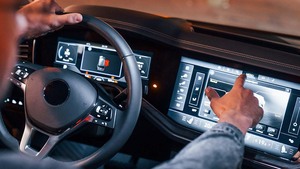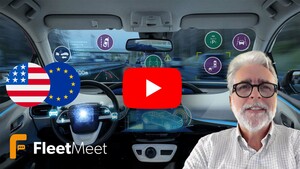A recent study has just concluded over the effectiveness of interventions that would encourage safe driving. Interventions that provide direct real time feedback appear to work best.
A total of five intervention solutions were tested
- Online driving behavior training
- An App that keeps the phone in a non-disturb mode
- A weekly driving score
- Real time driving tips
- An App that shows real time speed and any fines.
For the research, the driving behavior and the appreciation for each solution of the participants were ultimately analysed. The participants were divided into 6 groups, who have run a period without a solution (0 test) and a period with a solution (1 test).
The first important finding was that in the driving scores no statistically significant difference was found per group during 0 measurement. Essentially, the drivers in each group had a fairly similar driving style. The driving scores of the 0 measurement and the 1 measurement were then compared with each other.
Analysis showed that in one group there was a statistically significant progress in driving behaviour when provided with real time feedback. Drivers were able to better anticipate traffic with this feedback and noticed that they drive more sustainably and safely. This was also reflected in the analysis. No statistically significant differences were found with the other solutions.
The feedback from the drivers on the various solutions also produced some interesting results. Real time feedback solutions were received well compared to those that did not provide real time feedback. Drivers reported that they were more able to anticipate changing driving conditions. This is due to the fact that that they were driving in more measured way, resulting in a safer, more economical style.

We call this mindful driving. It can make drivers up to 30% more economical and half as likely to have an accident. It is a matter of changing driving habits and creating a new safety culture within organisations.
Bart Vanham
Drivers were in favour of non real time feedback solutions as it provided insight into their driving scores. Drivers are intrigued by the data and do like the gamification of apps where your score is ranked amongst fellow colleagues. Working on improving driving behaviour to get the weekly score up is a key driver. However, due to the time between driving and the moment of feedback it was more difficult to improve the scores.
Some of the drivers consider it important to keep attention on the road and want a solution that ensures less distraction in the environment. Another part has actually improved driving by getting direct feedback and insight into driving behavior. They do not experience the direct feedback on driving behavior as disturbing (as long as this is in a quiet normal way).
To influence driving behavior, it is important to determine the driver or employer ‘driving force (safety vs. environment). In addition, it is important to determine whether the driver appreciates direct feedback in the car.
Any solution that is selected has to be easy to implement and meet the objectives set by the sponsors of the project. Drivers have to be onboard and have access to a programme that delivers across all aspects of learning.
Bart Vanham
View a recent case study.
Make 2020 the year of change for your company and reduce driving risks.



